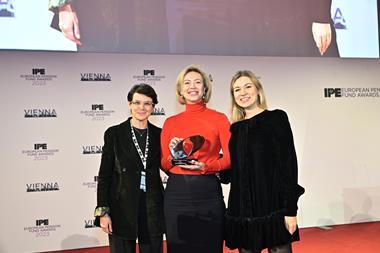The Austrian €14.8bn VBV Pensionskasse has reported reutrns of 5-7.5% – a performance range rather than one figure – following last week’s announcement of the industry’s average performance for 2023.
“We want to break with the tradition of boiling all our different strategies and risk models down to one figure,” Günther Schiendl, board member at VBV Pensionskasse, told IPE.com.
VBV noted that its most conservative portfolios generated a return of 5%, while the most dynamic ones yielded 7.5%.
The industry average was calculated at 6.42%, as reported last week by Fachverband der Pensions- und Vorsorgekassen (WKO), the Austrian association established to represent the interests of pension and provident funds.
Since the inception of the Pensionskassen system in Austria in 1991, providers are managing different risk and asset allocation profiles for companies wanting to offer occupational pension plans.
That means that some of the pension fund portfolios contain up to 50% equities, while some only have 15%. Equally, some – with a higher risk aversion – have (almost) no exposure to alternatives.
VBV is managing 35 different portfolios with very different risk and return strategies ranging from “conservative” to “dynamic”.
“It makes no sense to compare the performance of these different portfolios”, Schiendl said, adding that by reporting a return range he “wants to change people’s perceptions and expectations” as they should be made aware of the risk and return strategy in the portfolio they are in.
Legally, people in a Pensionskasse have the possibility to change into different portfolios up to three times. Some companies have implemented a lifecycle model including an automatic switch (with an opt-out) to a less risky portfolio once a certain age is reached.
Equities needed restructuring
For all portfolios Schiendl noted that bonds yielded “above-average” returns but he added the rate hike in autumn “cost quite a few nerves”. Positive returns were also yielded by its private debt exposure.
Negative returns came from some equities – especially the VBV’s long running exposure to US small caps took a dive after the US banking crisis. This, together with inflation and supply chain problems, also hit small caps linked to the renewable energy sector.
“We had to adjust our equity portfolios in a difficult environment but it worked for the last two months and now we are well-positioned,” noted Schiendl.


















No comments yet